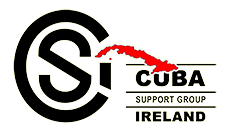
Cuban Children Return to the Classroom, Happy and Eager for another School Year
Millions of children around the World today, go without free access to education.
“Cuban children, without exception, have a classroom to go to every September,this is one of Cuba’s greatest and most admirable achievements. All children matter, from the most remote mountain community to the busiest of cities. And that fact fills us with pride. Every September, Cuba proves that nothing is impossible because no child or person eager to learn will be left behind”










